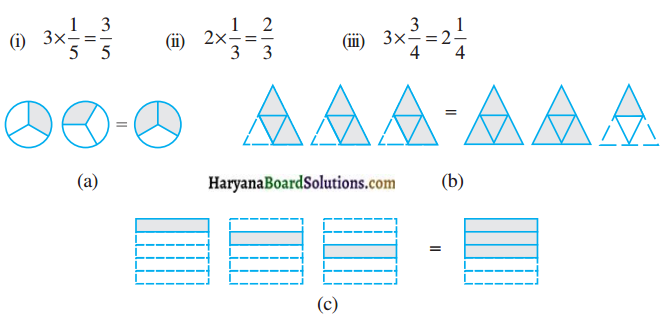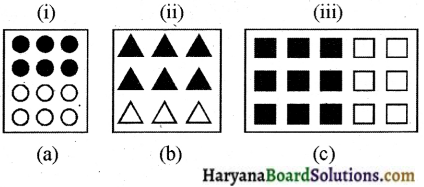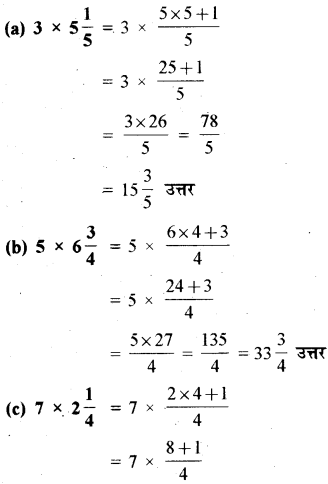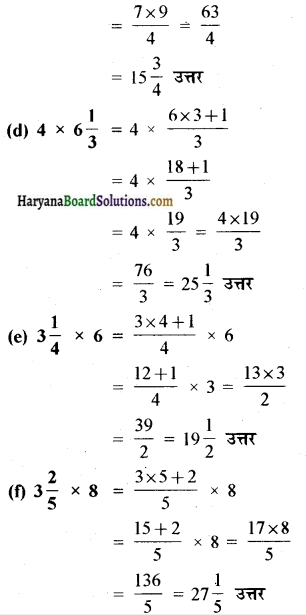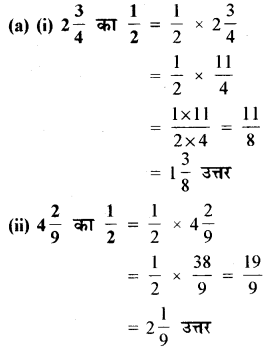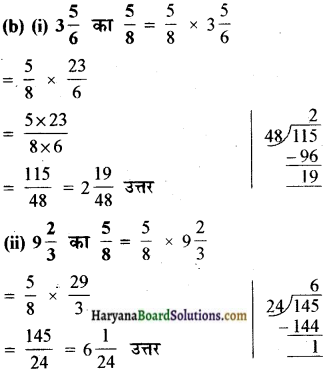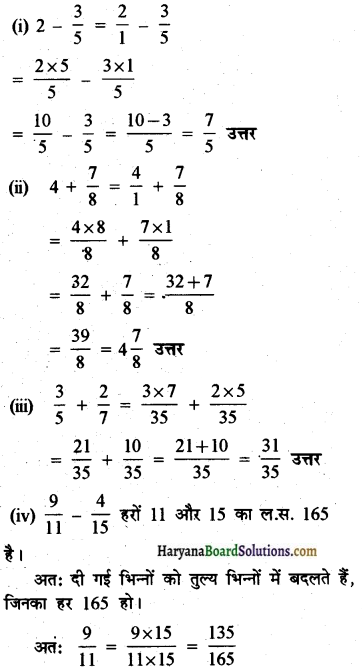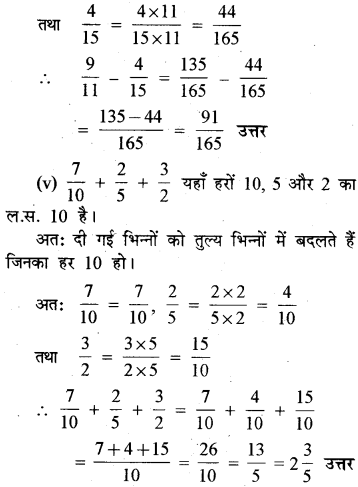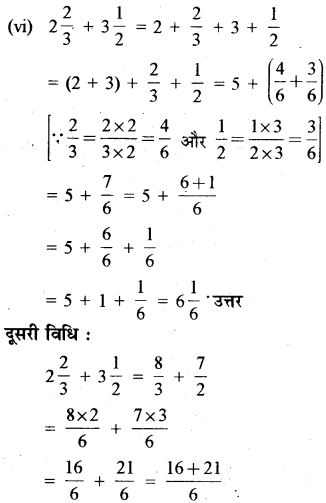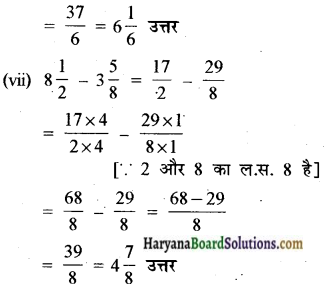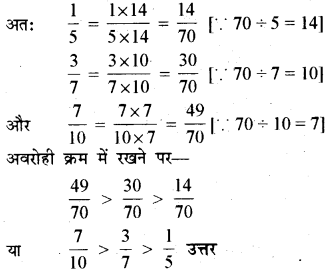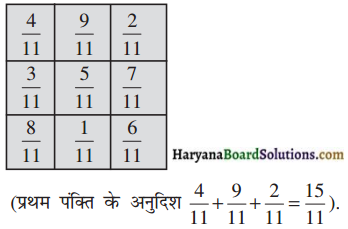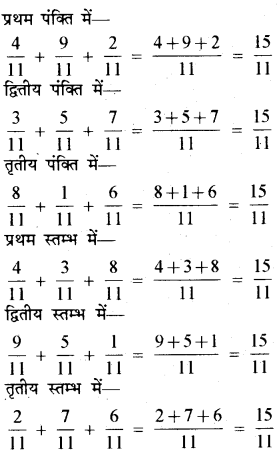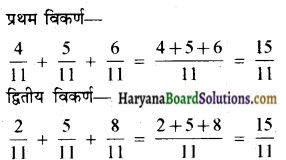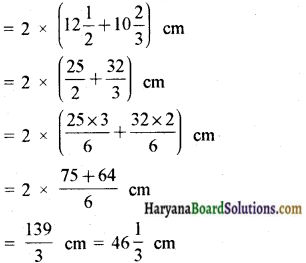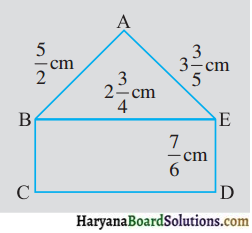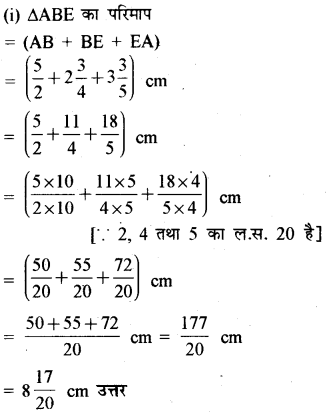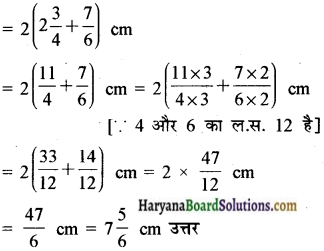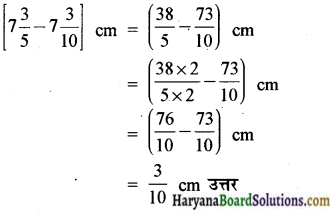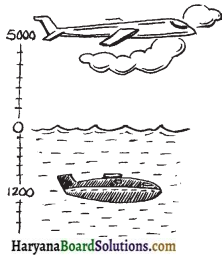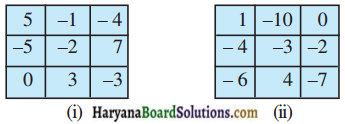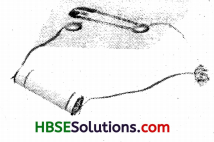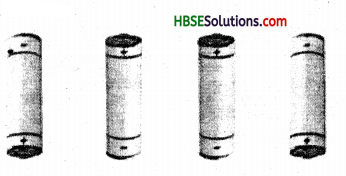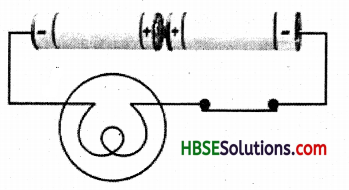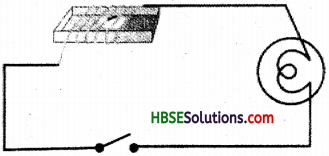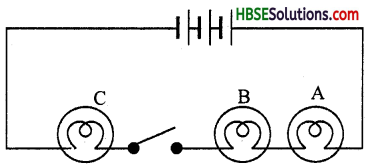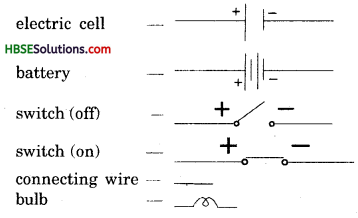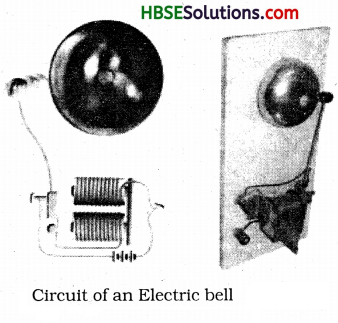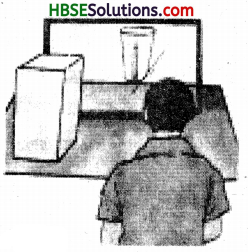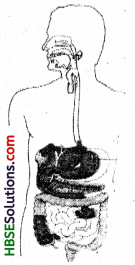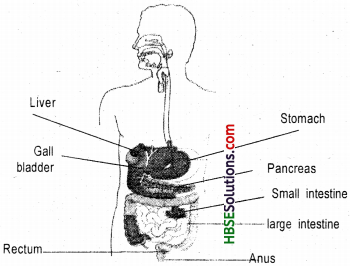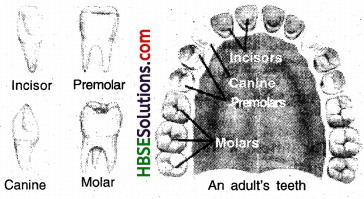HBSE 7th Class Science Solutions Chapter 17 Forests: Our Lifeline
Haryana State Board HBSE 7th Class Science Solutions Chapter 17 Forests: Our Lifeline Textbook Exercise Questions and Answers.
Haryana Board 7th Class Science Solutions Chapter 17 Forests: Our Lifeline
HBSE 7th Class Science Forests: Our Lifeline Textbook Questions and Answers
Question 1.
Explain how animals dwelling in the forest help it grow and regenerate.
Answer:
Animals help in growing and regenerating forests in many ways. Animals work as the cleaning agents in the forest micro-organisms work on the dead bodies of plants and animals and degenerate them. This also renourishes the soil of the forest with the nutrients broken by the micro-organisms. Animals also help in dispersing the seeds of various plants and help in their pollination. This helps in growing a number of plants, which serve as a food for a number of herbivorous animals. Herbivores helps the carnivores to grow as they serve as food for them. Thus, the flora and fauna grows the in forests.
Question 2.
Explain how forest prevent floods.
Answer:
Forests can absorb a lot of water. The roots of the trees absorb the water and prevent it from flowing away. This helps in preventing floods.
Question 3.
What are decomposers? Name any two of them. What do they do in the forest?
Answer:
Decomposers are the organisms which feed on the dead bodies of the plants and animals. They clean the forests of the decaying dead bodies and replensish the nutrient back to the forest soil e.g. beetles and grubs.
![]()
Question 4.
Explain the role of forest in maintaining the balance between oxygen and carbon dioxide in the atmosphere.
Answer:
Plants release Oxygen in the atmosphere during the process called photosynthesis. This oxygen is inhaled by the animals living in the forest for their respirations. During respiration, they release carbon dioxide, which is absorbed by plants. In this way the O2 – CO2 cycle goes on in the forest.
Question 5.
Explain why there is no waste in a forest.
Answer:
There is no waste in the forest because decomposers convert all the dead bodies of the plants and animals into the humus. Humus gets added to the soil and no waste is remained.
Question 6.
List five products we get from forests?
Answer:
Products we get from forests:
- We get wood from forests which is used for many purposes like making furniture, paper etc.
- We get medicines from forest.
- We get fodder for our animals from forest.
- We get gum, wax etc.
Question 7.
Fill in the blanks :
(a) The insects, butterflies, honeybees and birds help flowering plants in __________.
(b) A forest is a purifier of __________ and __________.
(c) Herbs form the __________ layer in the forest.
(d) The decaying leaves and animals droppings in a forest enrich the __________.
Answer:
(a) pollination
(b) water and air
(c) lowest layer
(d) soil as humus.
Question 8.
Why should we worry about the conditions and issues related to forests far from us?
Answer:
We should be worried about deforestation, as it would lead to floods, increase in earth’s temperature, depriving animals of their habitats and soil erosion.
Question 9.
Explain why there is a need of variety of animals and plants in a forest.
Answer:
Animals and plants sustain the forest life CO2 – O2 cycle goes on in the forest due to animals and plants. Animals convert the dead plants and animals into humus and increase the fertility of soil. All food cycles and food webs need variety of plants and animals.
![]()
Question 10.
In Fig. the artist had forgotten to put the labels and directions on the arrows. Mark the directions on the arrows and label the diagram using the following labels :
clouds, rain, atmosphere, carbon dioxide, oxygen, plants, animals, soil, roots, water table.
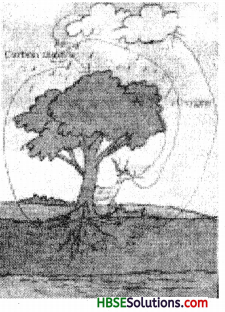
Answer:
(See. Fig.)
Question 11.
Which of the following is not a forest product?
(i) Gum
(ii) Plywood
(iii) Sealing wax
(iv) Kerosene
Answer:
(iv) Kerosene
Question 12.
Which of the following statements is not correct?
(i) Forests protect the soil from erosion.
(ii) Plants and animals in a forest are not depedent on one another.
(iii) Forests influesce the climate and water cycle.
(iv) Soil helps forest to grow and regenerate.
Answer:
(ii) Plants and animals in a forest are not depedent on one another.
Question 13.
Micro-organisms act upon the dead plants to produce
(i) sand
(ii) mushrooms
(iii) humus
(iv) wood
Answer:
(iii) humus
Extended Learning-Activities and Projects
Question 1.
The Department of Environment is to decide whether some portion of a forest in your area could be cleared for a housing complex. Write a letter to the department explaining your point of view as a concerned citizen.
Answer:
Do it yourself.
Question 2.
Visit a forest. Here is a list of points that would make your visit more fruitful.
(а) Make sure that you have permission to go into the forest.
(b) Make sure that you can find your way around. Get a map and go along with some one who is familiar with the area.
(c) Keep a record of the things you see and do. Observations make the visit interesting. Sketches and photographs are useful.
(d) You may record bird calls.
(e) Collect different kinds of seeds or hard fruits like nuts.
(f) Try to recognise various types of trees, shrubs, herbs, etc. Make lists of plants from different places in the forest and of diferent layers. You may . not be able to name all the plants, but it is worth recording and seeing where they grow. Make a record of approximate heights of plants, crown shape, bark texture, lea size, and flower colour.
(g) Learn to recognise the animal’s droppings.
(h) Interview the forest officials and the people of surrounding villages and other visitors.
Answer:
Do it yourself.
HBSE 7th Class Science Forests: Our Lifeline Important Questions and Answers
Very Short Answer Type Questions
Question 1.
Write three things we get from forests.
Answer:
Wood, gum and medicine
Question 2.
What is a forest?
Answer:
Forest is a place hosting a number of plants and animals.
Question 3.
Which plants constitute canopy in forests?
Answer:
Tall and giant trees.
![]()
Question 4.
Which plants constitute the understoreys in forest?
Answer:
Shrubs, tall grasses and small trees.
Question 5.
What is the basic unit of any food chain?
Answer:
Plants.
Question 6.
Draw any simple food chain going on in the forest.
Answer:
Grass → insects → frog snake → eagle.
Question 7.
What is Humus?
Answer:
Humus is a dark coloured substance which is formed from the dead bodies of plants and animals.
Question 8.
What are decomposers?
Answer:
The micro-organisms which decompose the dead bodies of the plants and animals are called decomposers.
Question 9.
Who helps in the dispersal of seeds of plants in the forest?
Answer:
Animals and wind helps in dispersal of seed.
Question 10.
How does forest help in preventing floods?
Answer:
Forests absorb the rain water in the soil and prevent the floods.
Question 11.
Why the noise pollution is less in the areas situated near the forests?
Answer:
Forest absorb the noise and prevent noise pollution.
Question 12.
What is deforestation?
Answer:
Cutting and destroying the forest is called deforestation.
![]()
Question 13.
What are the effects of deforestation?
Answer:
Floods, rising temperature, scarcity of food and wood and disturbed food chains are the results of deforestation.
Question 14.
How can we preserve our forest wealth?
Answer:
We can preserve our forest wealth by planting more and more trees.
Question 15.
What do you mean by afforestation?
Answer:
Planting more trees is called afforestation.
Short Answer Type Questions
Question 1.
Write any four products we get from forests.
Answer:
- We get wood from the forests.
- We get medicinal plants from the forests.
- We get gum and paper from the forests.
- We get food from forests in form of plants and animals.
Question 2.
What kind of flora is found in the forest?
Answer:
We can find wide variety of plants in the forest. We can find huge and giant trees. We can find small trees and shrubs. Various small plants like shrubs and grasses are also found in the forest.
Question 3.
What is a food chain?
Answer:
All the living components of the forest depend upon each other for their food. This interdependence of one organism on other for food is called a food chain.
Question 4.
What do you mean by micro-organisms?
Answer:
Micro-organisms as the name suggest are very small organisms. These organisms are so small that they cannot be seen with naked eyes. They can be seen under a microscope only e.gt bacteria, yeast etc.
Question 5.
What are decomposers?
Answer:
Decomposers are the micro-organisms which feed on the dead bodies of the plants and animals. They convert the dead bodies of these plants and animals into fertile humus.
Question 6.
How forests help in bringing rain?
Answer:
Trees absorbs water from the soil through their roots. They then release the excess of water through the process of transpiration in the form of water vapours. These water vapours form clouds and clouds bring rain.
Long Answer Type Questions
Question 1.
List the utility of forests.
Answer:
Forests are indispensible for us. They play an important role in our lives and in our environment.
Following are the importance of the forests:
(i) Forests give us a number of products which are very useful for us. They provide us wood. Wood is used to make furniture, house, toys, sports and fuel. Forests give us many medicinal plants. They give us gum, wax, catechu fruits, fodder and many more things.
(ii) Forests help in causing rains.
(iii) Forests maintain the temperature of the earth.
(iv) Forests maintain the O2 – CO2 cycle going on in the environment.
(v) Forests maintain the water-cycle going on in the environment.
(vi) Forests prevent many climate disaters like flood and draughts.
(vii) Forest provide shelter to a lot of wild life.
![]()
Question 2.
How forest sustain various variety of animals?
Answer:
Forests have different types of animals in it. Herbivores, Carnivores and Scvengers etc. Forest provide all the conditions necessary for their living. They get their food in the forest itself. The herbivores get their food in the form of plants. Carnivores eat the herbivores and systain their lives. Scavengers live on the dead bodies of all these animals and plants. Various invisible micro-organisms also live in forest. These micro-organisms are called decomposers. They convert the dead remains of animals and plants into the fertile humus.
Question 3.
What is the importance of scavengers and decomposers in the forests?
Answer:
A number of animals and plants live in forests. When they die, no body cremate their dead bodies. They keep on lying there. Scavengers like vultures, eagles etc. eat their dead bodies. They eat the flesh and other soft orgAnswer: The rest of the dead bodies are broken down by various micro-organisms called decomposers. They decompose the dead bodies of animals and plants into a dark substance called humus which is very nutritious for the soil. If scavengers and decomposers do not eat the dead bodies of animals and plants, the forest would become a big store of dead bodies and unfit for any wild life. This would disturb the whole environmental balance.
Forests: Our Lifeline Class 7 HBSE Notes
- A major part of our land is covered with forest.
- Forests are very important renewable resource.
- Forest help in maintaining the CO2-O2 cycle in our environment.
- They serve as a habitat to a number of plants and animals.
- Forests are indispensible for human life.
- A lot of variety of small and big plants can be found in forests.
- Different species of animals and birds live in forest.
- All the biotic and abiotic components of the forest are interrelated to each other.
- All these components serve as the complementory to each other.
- Forests save the soil erosion and maintain water table beneath the soil.
- They cause the rains and maintain the water cycle.
HBSE 7th Class Science Solutions Chapter 17 Forests: Our Lifeline Read More »

